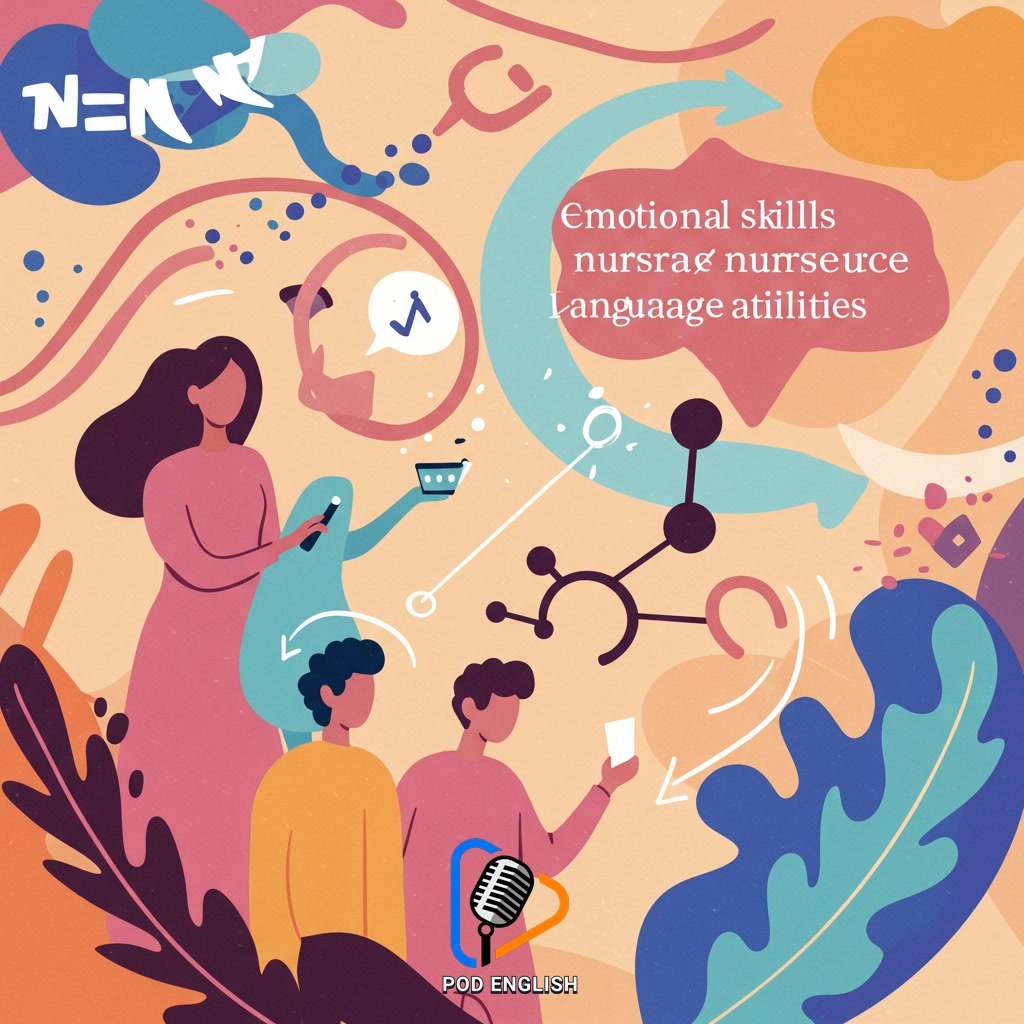Learn English
Boost English Skills Through Social Emotional Learning in Class

Integrating Social Emotional Learning (SEL) strategies can significantly enhance students’ proficiency in English. By fostering self-awareness, relationship skills, and responsible decision-making, SEL creates a supportive atmosphere conducive to language acquisition. These approaches help students build confidence, manage anxiety related to speaking, and improve communication effectiveness in the environment where they are learning English. Ultimately, combining SEL with language education provides a holistic pathway to better English communication abilities.
Table of Contents
- Section 1: Introduction: Defining Social Emotional Learning and its Relevance to English Acquisition
- Section 2: How SEL Components Enhance Specific English Language Skills
- Section 3: Integrating SEL Strategies into English Lesson Planning
- Section 4: Practical Classroom Activities for SEL-Infused English Learning
- Section 5: Measuring the Impact: Assessing English Proficiency and SEL Growth
- Section 6: Conclusion: Fostering Holistic Growth Through SEL in the English Classroom
Section 1: Introduction: Defining Social Emotional Learning and its Relevance to English Acquisition
Social Emotional Learning, or SEL, is the process of developing self-awareness, self-control, and interpersonal skills vital for school, work, and life success. It involves understanding your emotions, setting positive goals, feeling empathy for others, building healthy relationships, and making responsible decisions. For students learning English, SEL is incredibly relevant. Learning a new language can bring feelings of shyness or fear of making errors. SEL helps students build confidence, manage anxiety about speaking, and develop resilience. By fostering self-awareness, students can recognize their feelings about language learning challenges. Developing relationship skills allows them to interact more effectively with peers and teachers in English, improving communication practice. Ultimately, SEL creates a supportive and positive mindset, making students more open and motivated to engage with the English language, leading to better acquisition and fluency.

Introduction: Defining Social Emotional Learning and its Relevance to English Acquisition
Section 2: How SEL Components Enhance Specific English Language Skills
Social Emotional Learning components directly impact various English language skills. For instance, developing self-awareness helps students recognize their confidence levels and anxieties when speaking English, enabling them to manage stage fright or hesitation. Self-management skills allow learners to focus on complex grammar rules or challenging vocabulary without becoming overwhelmed. Social awareness improves understanding of cultural nuances and non-verbal cues in English conversations, enhancing listening and comprehension. Relationship skills foster positive interactions during group activities or partner work, crucial for practicing conversational English. Finally, responsible decision-making guides students in choosing appropriate language for different contexts and reflecting constructively on their learning progress, leading to more effective communication and skill refinement across reading, writing, listening, and speaking.

How SEL Components Enhance Specific English Language Skills
Section 3: Integrating SEL Strategies into English Lesson Planning
To effectively boost English skills through SEL, teachers must consciously integrate these strategies into their lesson planning. This goes beyond merely adding separate SEL lessons; it involves embedding SEL practices within existing English activities. For example, planning group discussions encourages relationship skills and social awareness while practicing speaking and listening. Incorporating reflective journaling prompts in English helps students develop self-awareness regarding their language learning progress and emotional responses. Role-playing scenarios can build self-management and responsible decision-making skills using target vocabulary and grammar. Teachers should plan for explicit moments where students can practice empathy, active listening, and managing frustration, all within the context of using and improving their English communication abilities.

Integrating SEL Strategies into English Lesson Planning
Section 4: Practical Classroom Activities for SEL-Infused English Learning
Embedding Social Emotional Learning into English language instruction involves practical, hands-on activities that directly connect emotional intelligence with language use. For instance, pair or group activities designed around expressing feelings or opinions in English encourage students to practice speaking and listening while building relationship skills. Role-playing scenarios that require navigating social interactions or resolving simple conflicts provide opportunities to use target vocabulary and grammar in a safe context, enhancing social awareness and responsible decision-making. Journaling about personal experiences or reflections on reading materials promotes self-awareness and self-management through written English practice. These activities move beyond traditional drills, creating an engaging and supportive environment where students feel comfortable taking linguistic risks and developing confidence in using English for genuine communication, thereby boosting their overall proficiency.

Practical Classroom Activities for SEL-Infused English Learning
Section 5: Measuring the Impact: Assessing English Proficiency and SEL Growth
Assessing the impact of integrated SEL on English proficiency and emotional growth requires a multifaceted approach. Building upon the practical activities discussed earlier, teachers can employ observation checklists during pair or group work to track both students’ language use and their demonstration of SEL skills like active listening or empathy. Student self-reflection journals or structured peer feedback sessions provide insights into their self-awareness and relationship skills, directly linking these to their communication experiences in English. Furthermore, task-specific rubrics can be designed to evaluate not only grammatical accuracy and fluency but also the effective application of social cues and collaborative skills during communication tasks. This continuous assessment process helps educators identify areas for further support, ensuring students are developing both their English communication abilities and their emotional intelligence concurrently, fostering more effective and confident English learners.

Measuring the Impact: Assessing English Proficiency and SEL Growth
Section 6: Conclusion: Fostering Holistic Growth Through SEL in the English Classroom
Building upon the assessment of integrated SEL, it becomes clear that fostering holistic growth is paramount in the English classroom. By weaving SEL strategies into language learning activities, educators empower students not just to improve their English proficiency but also to develop crucial life skills. This integrated approach cultivates self-awareness, enhances relationship-building capabilities, and promotes responsible decision-making. Students gain confidence to express themselves, manage communication anxieties, and engage more effectively with peers and teachers. Ultimately, the synergy between SEL and English education creates a supportive and dynamic environment where students thrive emotionally and linguistically, paving the way for more effective and confident communication in English and beyond. This holistic development is the true measure of success.

Conclusion: Fostering Holistic Growth Through SEL in the English Classroom













